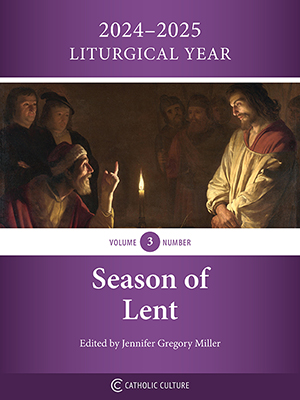The Shrine That Charlemagne Built
by Zsolt Aradi
The city of Aachen today is a quiet town. Still, there is hardly another city in Germany, which could equal its past glory. This was the town of Charlemagne (768-814) and it remained the capital of the Holy Roman Empire until the middle of the sixteenth century. Thirty-seven German emperors were crowned in Aachen.
Aachen was made the capital of the Empire by Charlemagne and a great part of its lasting fame dates from his reign. One of the chapels of the Cathedral built by Charlemagne has immeasurable treasures for the Christian world. It guards the so-called four great relics, the cloak of the Blessed Virgin, the swaddling cloth of the Infant Jesus, the loin cloth worn by Our Lord on the Cross and the cloth on which lay the head of St. John the Baptist following his beheading.
When Charlemagne built the Cathedral he took pride in securing for it as many important relics from the Holy Land and Rome as he could. This pious practice was continued by his successors and it explains why the Cathedral in Aachen contains so many religious treasures and relics cherished by the whole Christian world. One of the first desires and orders of Charlemagne was, after he chose Aachen as his capital, to build a Lady Chapel because of his deep devotion to the Blessed Virgin.
Aachen is one of those few places where ancient history is based almost entirely on written documents. No legend could make the history of Aachen more dramatic than those documents, which describe Charlemagne's court. His palace school and his educational plan drew such men as Alcuin, a follower of Bede, who from Aachen spread the results of Anglo-Saxon scholarship to all of Europe. The history of Aachen speaks of great festivities during the crownings of the emperors; of Otto the Great; of Frederick Barbarossa; of the fight against new barbaric invasions from the East during the eighth and ninth centuries which all had their reflection in the court of Aachen.
Though the life of Aachen was immersed in daily excitement, intellectual as well as political, there was one solid edifice built by Charlemagne, the Cathedral which houses the four great relics. These were more carefully guarded than any other relics in the world. Seldom exposed to wide public veneration before the fourteenth century, they have since been shown once in every seven years, when great pilgrimages flock to Aachen to venerate these great treasures. The insignificant looking cloths are regarded with greatest respect because they were worn by Christ and Mary.
This item 2992 digitally provided courtesy of CatholicCulture.org






